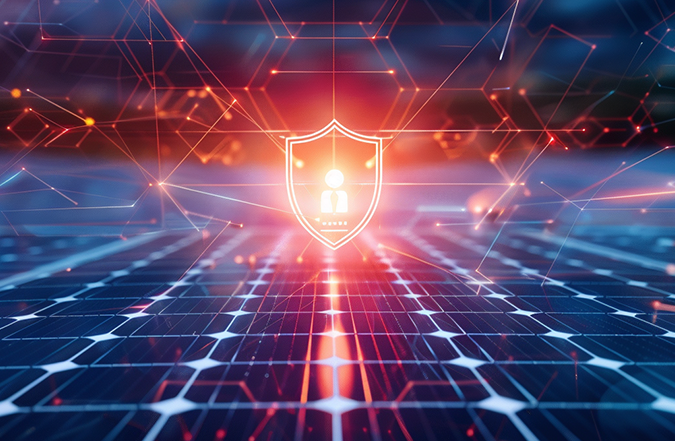At Nor-Cal Controls, we want your SCADA system operating at full capacity, ensuring your solar energy production thrives. As solar energy illuminates our path to a sustainable future (pun intended), the need to safeguard solar infrastructure from cyber threats takes center stage. While technological defenses and regulatory frameworks play crucial roles, it's security awareness training, embedded within a culture of cybersecurity, that stands as the linchpin of any effective initiative.
UNDERSTANDING CYBER THREATS IN THE SOLAR INDUSTRY
Consider a scenario where a solar technician receives an innocuous-looking email purportedly from a trusted vendor, offering a firmware update for the solar monitoring system. Unbeknownst to the technician, this email is a carefully crafted phishing attempt, designed to infiltrate the solar infrastructure through deceptive means. Despite robust encryption protocols and intrusion detection systems in place, one click could compromise the entire system, highlighting the critical importance of human vigilance in cybersecurity.
This is just one example of how cyber adversaries target the solar industry. From sophisticated phishing campaigns to supply chain attacks, malicious actors employ various tactics to exploit vulnerabilities and gain unauthorized access to solar infrastructure.
Phishing attacks, like the one described above, are prevalent in the solar sector. Attackers may impersonate trusted entities, such as vendors or regulatory agencies, to deceive employees into divulging sensitive information or unwittingly installing malware onto the system. Once inside, attackers can exfiltrate data, disrupt operations, or even hold systems ransom.
Moreover, supply chain attacks pose a significant threat to solar infrastructure security. By compromising suppliers or manufacturers along the supply chain, attackers can introduce malicious hardware or software into solar components before they ever reach the installation site. These hidden vulnerabilities may lay dormant for months or even years, undetected until activated by the attacker.
Additionally, attacks on monitoring systems represent another vector for cyber threats in the solar industry. Solar monitoring systems play a critical role in optimizing energy production, identifying performance issues, and detecting anomalies. However, if these systems are compromised, attackers can manipulate data, falsify performance metrics, or even disrupt energy production, leading to financial losses and grid instability.
Best Practices for Solar Power Security
In this landscape of evolving threats, security awareness training becomes not just a checkbox on a compliance list, but a cornerstone of defense against cyber adversaries. By educating personnel about common threats, best practices for email security, and the importance of scrutinizing digital communications, organizations can empower their workforce to be proactive guardians of solar infrastructure security.
Moreover, implementing robust security practices is essential to fortifying solar infrastructure against cyber threats. Here are some key practices:
Phishing Awareness:
- Train employees to recognize phishing attempts, including suspicious emails, links, and attachments.
- Encourage skepticism and verify the legitimacy of unexpected requests for sensitive information or actions.
Software Updates:
- Regularly update software and firmware for solar components, including inverters, monitoring systems, and control devices, to patch vulnerabilities and protect against known exploits.
- Implement a proactive patch management strategy to ensure timely deployment of security updates.
Access Control:
- Implement strong access controls, including multi-factor authentication (MFA) and role-based access controls (RBAC), to limit privileges and restrict unauthorized access to critical systems and data.
Incident Response:
- Develop and regularly test an incident response plan to outline procedures for detecting, responding to, and recovering from cybersecurity incidents.
- Establish communication channels and coordination mechanisms with internal teams, external partners, and regulatory authorities to facilitate timely response and mitigation efforts.
Fostering a Culture of Cybersecurity
Furthermore, fostering a culture of cybersecurity involves integrating security considerations into daily operations and decision-making processes. By encouraging employees to remain vigilant, report suspicious activities promptly, and adhere to established security protocols, organizations can create a resilient defense posture that adapts to evolving threats.
In conclusion, while technological advancements and regulatory measures are essential components of solar infrastructure security, they are incomplete without a robust culture of cybersecurity anchored by security awareness training and best practices. By prioritizing education, empowerment, and proactive security measures, organizations can mitigate risks and safeguard solar power as a beacon of sustainability for generations to come. Connect with Nor-Cal to discuss your next project.





